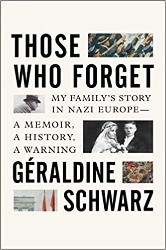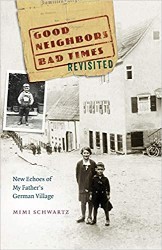“I am a camera with its shutter open,” Christopher Isherwood famously wrote of his time in Berlin, recording the heady days before the Nazis came to power. A decade later, Germany was ruled by Hitler and Europe was at war. On October 13, 1941, a photographer stood at a ravine in Miropol, Ukraine, the shutter of his camera open, and took a close-up of a woman at the moment she was shot, holding on to the hand of a small boy, with another child barely visible. The rifle is pointed close to her head, hidden by the smoke from the blast. The photo documents a single instant in the mass murder of Jews in Nazi-occupied Ukraine. It is a moment both horrific and intimate.
Who were the victims, who were the perpetrators, who were the bystanders, and who was the photographer? These are some of the questions that came to mind when Holocaust scholar Wendy Lower first viewed the photo in 2009 at the archives of the U.S. Holocaust Memorial Museum. Two journalists from Prague had just brought it to the Washington, D.C., museum. There are, Lower knew, a great number of photographs who documented the Holocaust, but, she notes, very few like this one who captured the precise moment of killing.
Investigating the photo took ten years of research as she probed each figure and every detail the camera captured, resulting in the story she tells in The Ravine. She offers this simple title for a complex piece of history that goes beyond the borders of the photographic image itself.
The detail she uncovers is remarkable, as she worked relentlessly to piece together the atrocity, just one of a number of mass shootings of Jews. Some of it is exceedingly difficult reading, in particular her visit to the ravine and its “scarred landscape.”
There is no Nazi documentation of the massacre at Miropol, but eighteen Ukrainians who agreed to be interviewed about events they had witnessed or taken part in provided important evidence. “Using hundreds of testimonies of Germans, Slovakians, and Ukrainians who passed through or resided in Miropol, and of the one Jewish survivor [of the massacre], I was able to reconstruct events just before, during, and after the photograph was taken on October 13,” Lower writes.
She succeeds in identifying the perpetrators — Germans and Ukrainians — and the photographer, a Slovakian stationed in Ukraine who took the photo in what she concludes was an act of defiance, and later joined the Resistance. Sadly, the victims remain nameless. They are, as Lower phrases it, “the missing missing.”



